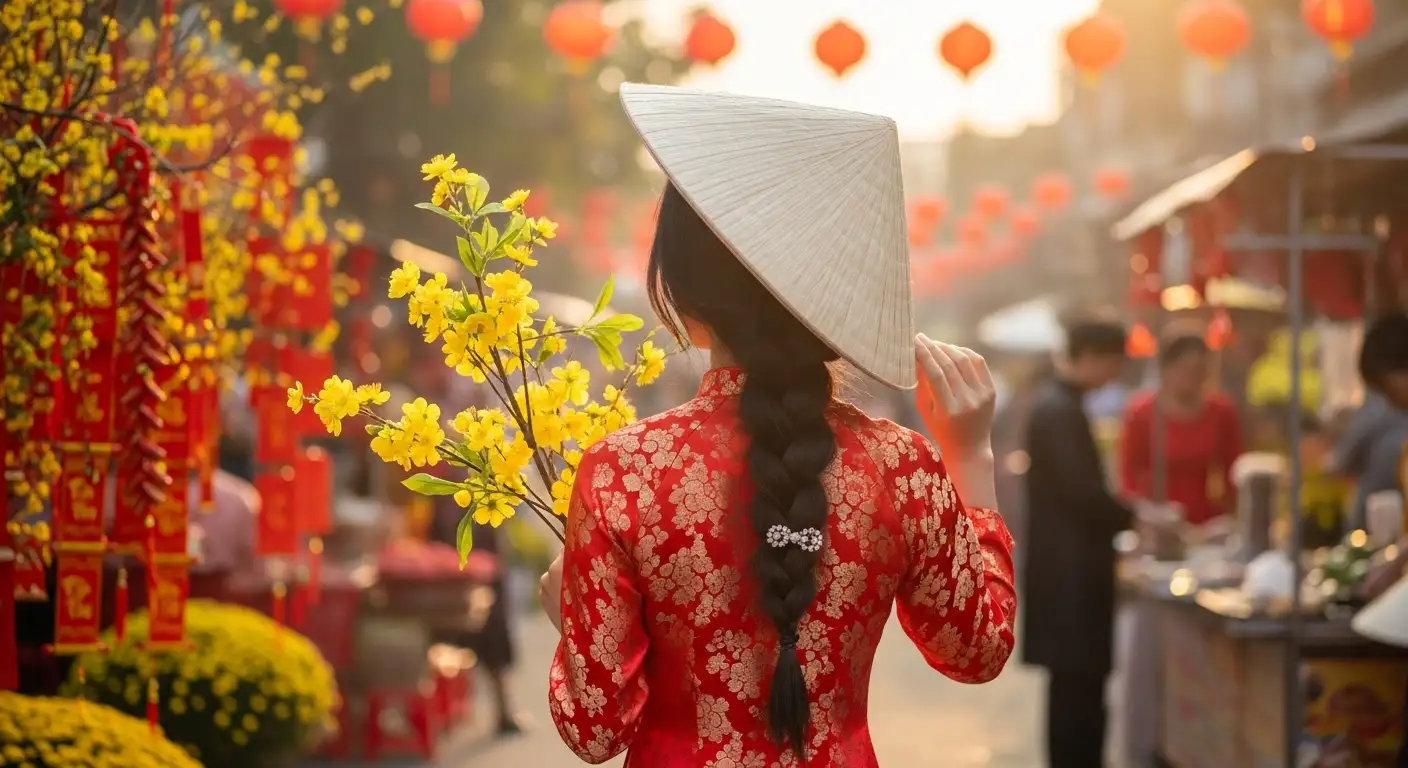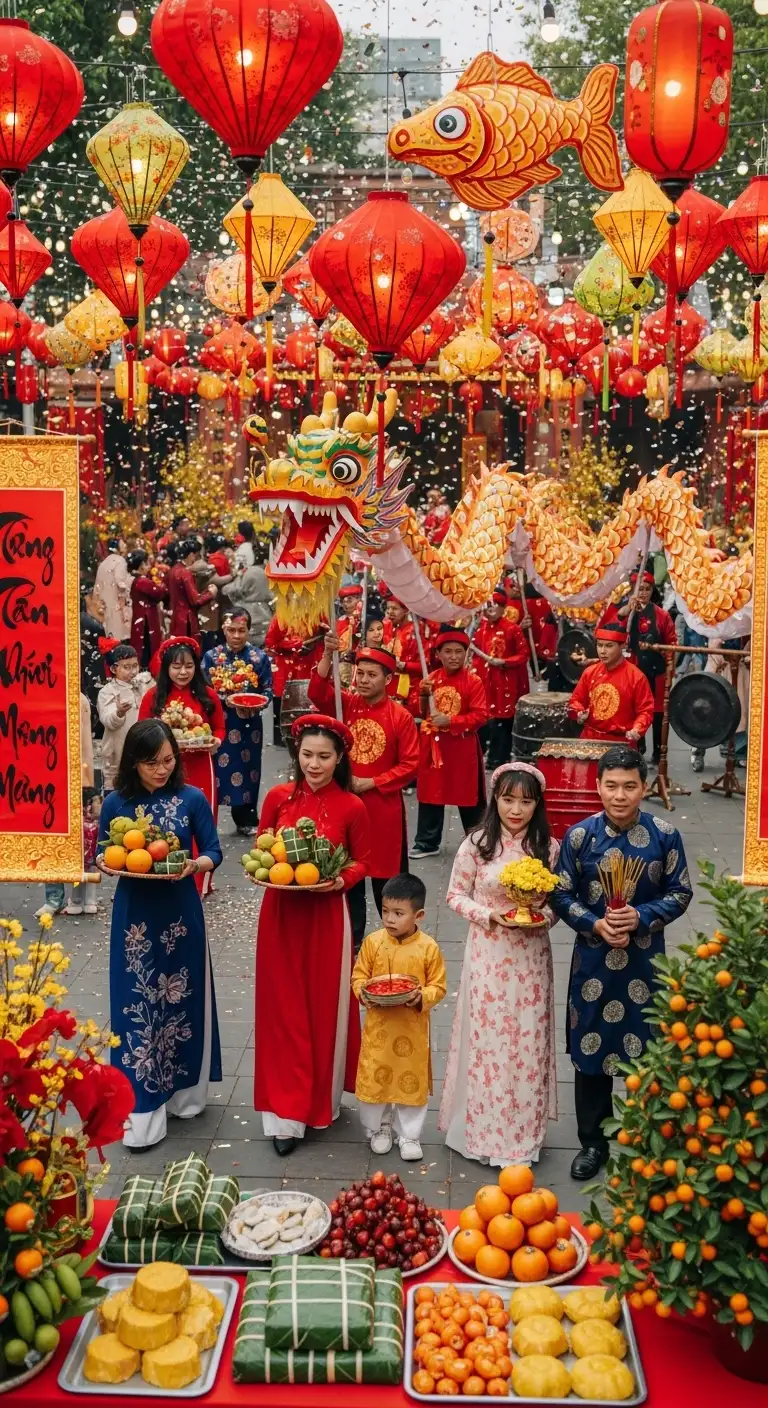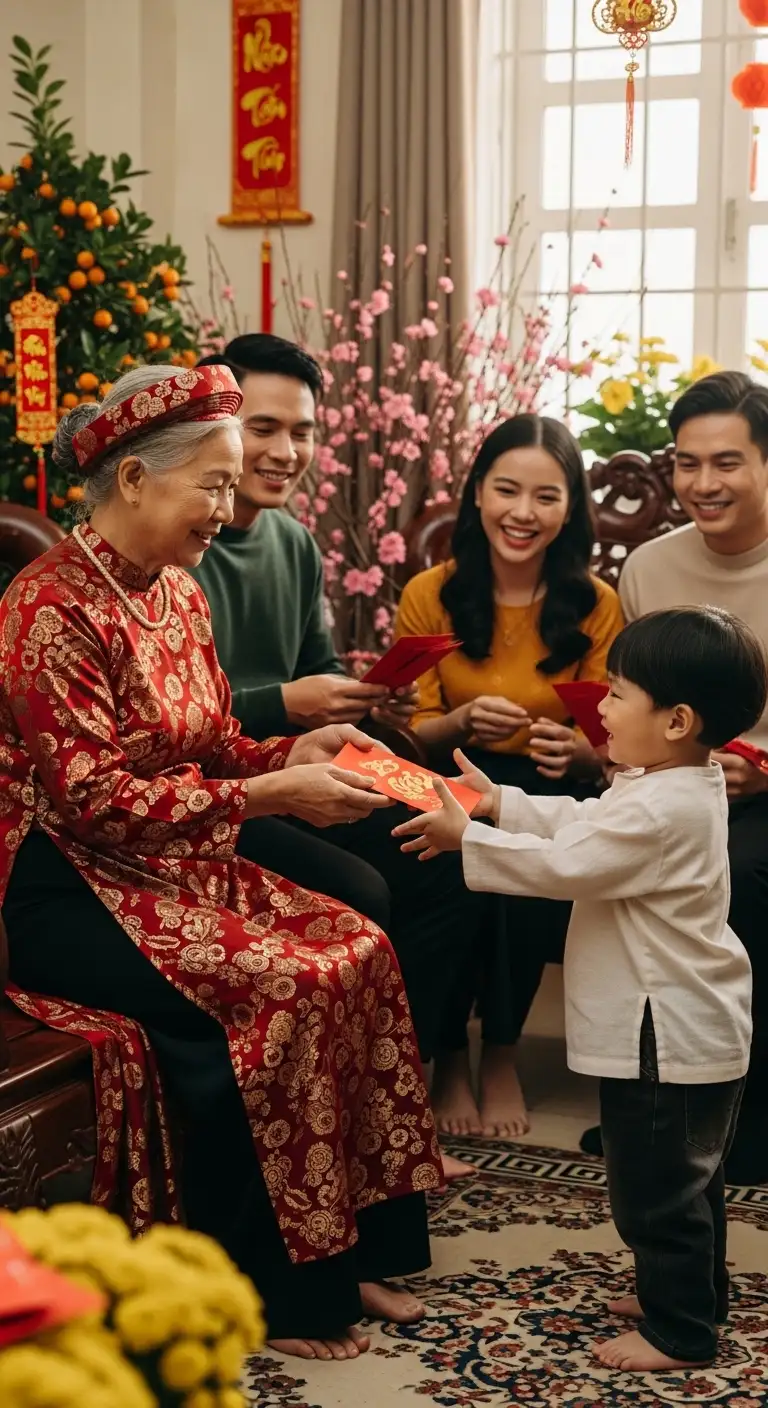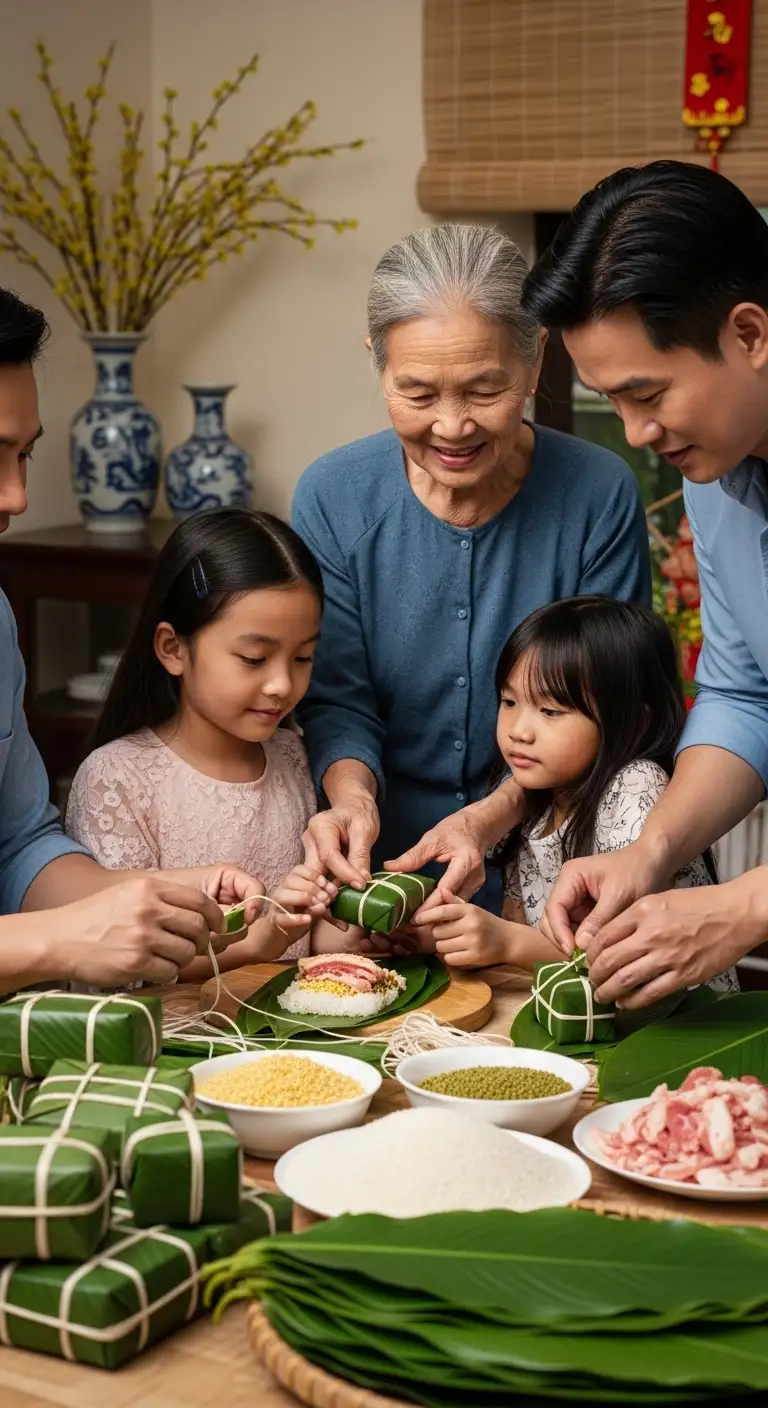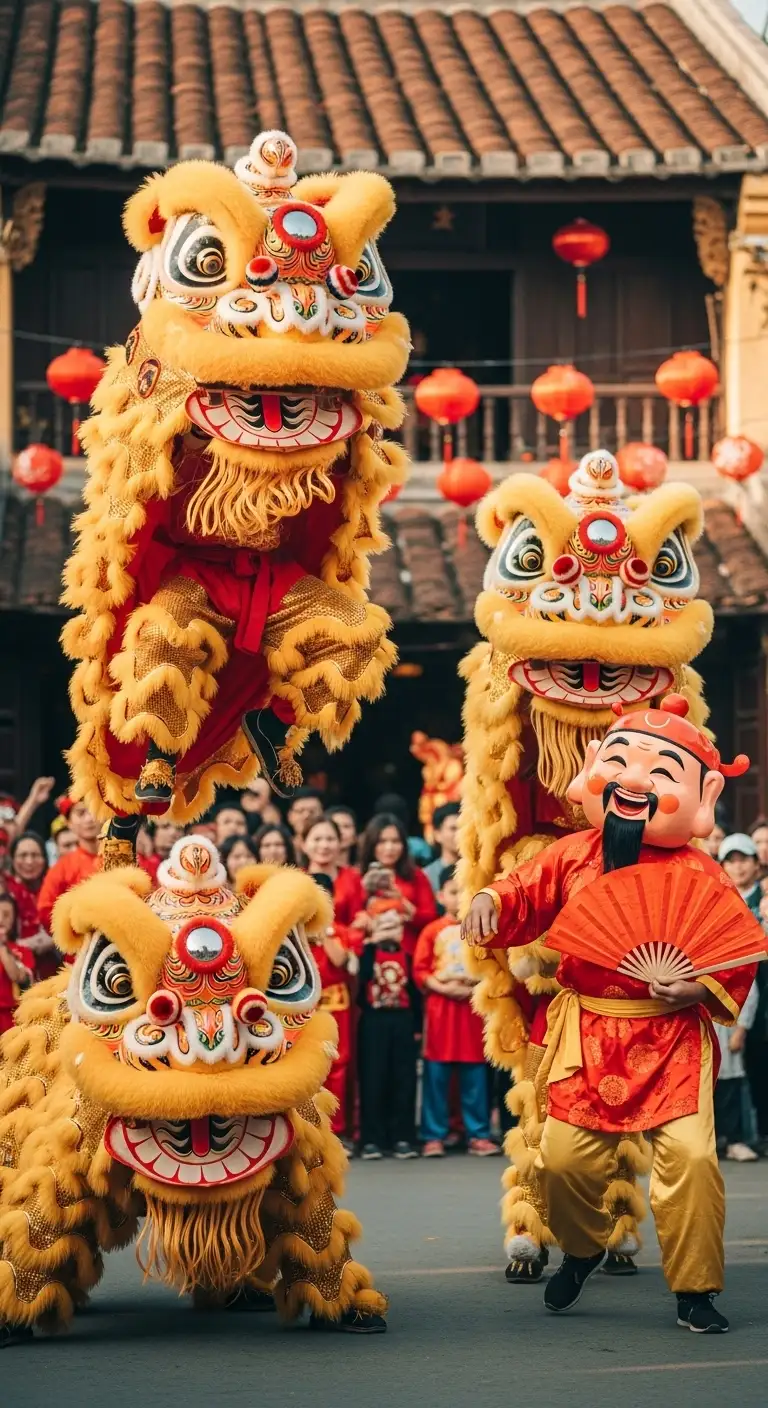| Data Field (Title) | Content | Icon/Note |
|---|---|---|
| Official Vietnamese Name | Tết Nguyên Đán (or simply Tết) | The Vietnamese Lunar New Year |
| English Name | Lunar new year | Also known as Spring Festival |
| Festival Period | 3 to 7 days of official public holiday, but celebrations can last up to 2 weeks. | Based on the Lunar Calendar (Late January or February) |
| Major Locations | Nationwide, but most vibrant in major cities (Hanoi, Ho Chi Minh City) and family homes. | Public events often center on city parks, pagodas, and flower markets. |
| Festival Category | Traditional, Cultural, National Holiday | The most important holiday of the year. |
| Highlights | Fireworks, Lion & Dragon Dances, Flower Markets, Family Feasts, Giving 'Lucky Money' (Lì Xì) | A time for renewal and ancestral worship. |
I. Overview & History
Festival Origin and Significance
Tết Nguyên Đán, meaning ‘Feast of the First Morning,’ is the most important and widely celebrated holiday in Vietnam. It marks the arrival of spring based on the lunisolar calendar. Historically, Tết originated in the Red River Delta as a celebration of a new cycle of rice cultivation. Today, its meaning transcends agriculture, emphasizing family reunion, ancestral worship, and a fresh start for the new year. It is a time for Vietnamese people to express their respect for their ancestors and to wish for luck, prosperity, and health.
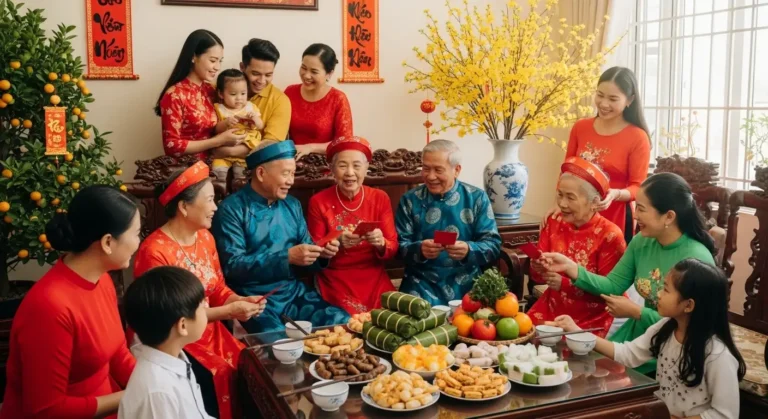
II. Key Activities and Programs
Preparation Period (Before Tết)
Vietnamese families engage in meticulous preparations, believing that a clean, tidy home attracts good fortune.
House Cleaning: Sweeping away the bad luck of the previous year.
Decoration: Homes are adorned with vibrant plants and decorations. The North prefers Peach Blossoms (symbolizing vitality), while the South favors Apricot Blossoms (symbolizing wealth). Kumquat Trees (prosperity) are common nationwide.
Flower Markets: Bustling markets (like Hàng Lược in Hanoi or Nguyễn Huệ Flower Street in HCMC) offer a spectacular sight of seasonal flowers.
Official Tết Days (Mùng 1, Mùng 2, Mùng 3)
The first three days follow a strict social custom:
Day 1 (Mùng 1 – Family Day): Reserved for visiting paternal relatives, ancestor veneration, and the tradition of xông đất (the first visitor who brings luck).
Day 2 (Mùng 2 – Social Day): Dedicated to visiting maternal relatives, friends, and close neighbors.
Day 3 (Mùng 3 – Teachers/Temples): A time to pay respects to teachers and visit local pagodas and temples to pray for a prosperous year.
Major Highlights
Lì Xì (Lucky Money): Elders give children and younger family members red envelopes containing money to wish them health and success.
Ancestral Altar Worship: Families offer elaborate feasts and prayers to their ancestors, inviting their spirits to join the celebrations.
Lion & Dragon Dances: Public areas and temples host vibrant, loud performances believed to scare away evil spirits and bring good luck.
Cùng Chúc (New Year Greetings): Exchanging well-wishes like “Chúc Mừng Năm Mới” (Happy New Year) and “An Khang Thịnh Vượng” (Security, good health, and prosperity).
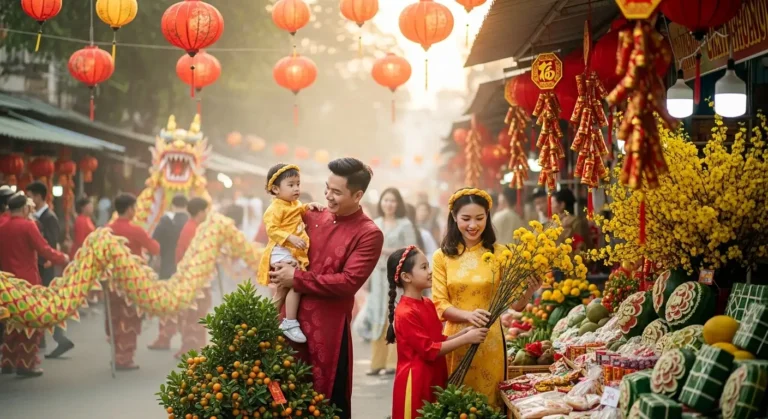
III. Traveler's Practical Guide
| Guide Field | Details |
|---|---|
| Local Cuisine | Bánh Chưng (square sticky rice cake, North) and Bánh Tét (cylindrical sticky rice cake, South) are mandatory. Other popular treats include Mứt (candied fruits) and Thịt Kho Trứng (braised pork and eggs). |
| Transportation | Book Early! Flights, trains, and buses are heavily booked in the week before and after Tết as millions travel home. Local taxis and ride-sharing services may be limited or apply surge pricing. |
| Closures | Many small, family-run restaurants, shops, museums, and local businesses will close for at least 3-7 days. International hotels and chain restaurants usually remain open. |
| Money/Cash | Banks and exchange offices close for the holiday. ATMs may run out of cash quickly. Withdraw enough cash (Vietnamese Đồng) in advance to last the entire period. |
| Etiquette & Tips | Dress Code: Wear new, bright, and colorful clothing (red and yellow are lucky). Invited Visits: Do not visit a Vietnamese home uninvited on Day 1. Giving Lì Xì: Always use new banknotes in a red envelope. Avoid Cleaning: Never sweep the floor during Tết, as it is thought to sweep away luck. |
